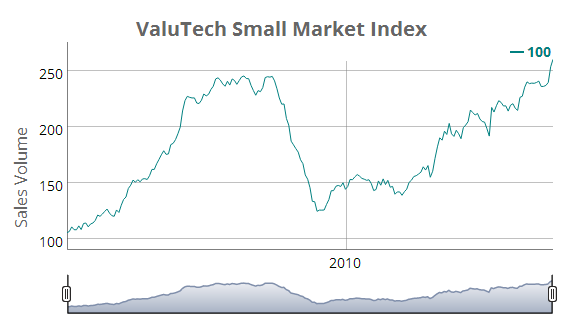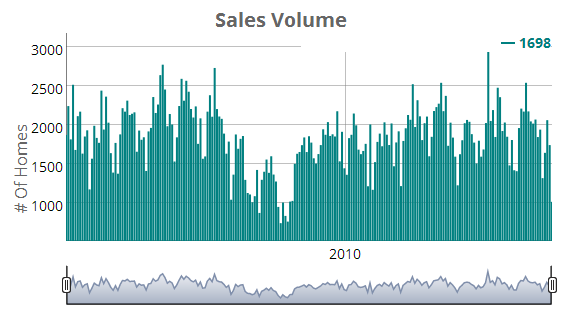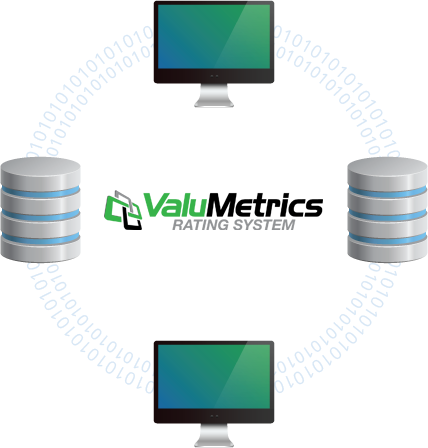

Leveraging our database, market segmentation and proprietary market indexes, ValuTech’s statistical software and reporting platform enables us to monitor market conditions, create robust analytics and to further exploit this information in our valuation processes and reports.
ValuTech’s market analytics are sophisticated and powerful tools reporting on all the key metrics to truly understand the underlying forces which are affecting the near-term and long-term trends in property values. This data is available in real time with no time lag making the information both relevant and useful.

Data
ValuTech data is the most comprehensive and accurate data utilized in any index or valuation model.
The integration of verified data from multiple sources including MLS Data and appraiser derived characteristics creates the most complete data set possible for deriving key market metrics.
Timeliness
For unmatched relevance, ValuTech incorporates multiple data feeds daily eliminating lengthy lag times experienced by other index methodologies.
This real-time data makes ValuTech’s indices appropriate for deriving short term price trends and valuation modeling.

Granularity
ValuTech utilizes a proprietary market delineation process to precisely analyze and report price trends and market statistics from the neighborhood level all the way up to the MSA for a comprehensive understanding of the true market conditions.

ValuTech Small Market Index
Our proprietary Small Market Index has a strong theoretical basis: it takes advantage of the strengths of a repeat sales model without excluding the information from single home sales. This expands the sample size available for index calculation, making it ideal for Valuation Technology’s neighborhood–level real estate intelligence applications. The index capitalizes on the strengths of the different indexing approaches while minimizing their respective downsides.
The model accounts for the amount of time that has passed between home sales both through the error term and through the covariance matrix. This time–dependent covariance consideration is what makes the model an “autoregressive” process. Advantages of the autoregressive model are that it requires much less information to run than a hedonic model or a repeat sales model like Case-Shiller and it better controls for compositional shifts than central tendency methods like NAR’s median price index.
